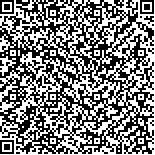苏彬,汤智伟,张丽,等.高频重复经颅磁刺激对脑卒中患者下肢功能的影响[J].中华物理医学与康复杂志,2025,47(3):209-215
扫码阅读全文

|
| 高频重复经颅磁刺激对脑卒中患者下肢功能的影响 |
|
| |
| DOI:10.3760/cma.j.cn421666-20240709-00566 |
| 中文关键词: 经颅磁刺激 脑卒中 双锥线圈 下肢功能 |
| 英文关键词: Transcranial magnetic stimulation Stroke Double cone coils Lower limb motor function |
| 基金项目:国家自然科学基金青年项目(82102665);上海市青年科技英才扬帆计划(21YF1404600);无锡市卫健委双百后备拔尖人才项目(HB2023085);无锡市卫健委青年项目(Q202444) |
|
| 摘要点击次数: 2145 |
| 全文下载次数: 1921 |
| 中文摘要: |
| 目的 探讨基于锥形线圈的高频重复经颅磁刺激(rTMS)对脑卒中偏瘫患者下肢功能的影响。 方法 选取脑卒中患者40例,按照随机数字表法将其分为假刺激组和rTMS组,每组20例。2组患者均给予常规康复治疗,rTMS组在此基础上采用锥形线圈进行10 Hz的高频rTMS治疗,假刺激组给予假rTMS治疗,每日1次,每周5 d,共3周。治疗前和治疗1周、2周、3周后,采用Fugl-Meyer运动功能量表下肢部分(FMA-LE)、Berg平衡量表(BBS)、改良Barthel指数(MBI)、Brunnstrom分期、TecnoBody平衡测试仪和表面肌电仪,对2组患者的下肢运动功能、平衡功能、股直肌与胫骨前肌的均方根值(RMS)和中位频率(MF)开展评估。 结果 与假刺激组比较,rTMS组治疗2周后的BBS评分[(29.8±7.56)分]较高(P<0.05),治疗3周后的FMA-LE评分[(20.55±3.69)分]、BBS评分[(34.55±6.68)分]较高(P<0.05)。假刺激组治疗3周后的Brunnstrom分期较组内治疗前有所改善(P<0.05),rTMS组治疗2周及3周后的Brunnstrom分期较组内治疗前明显改善(P<0.05),但组间差异无统计学意义(P>0.05)。rTMS组治疗2周后[(830.8±271.82)mm2]和3周后[(707.45±223.56)mm2]的运动椭圆面积较假刺激组小(P<0.05),治疗3周后的运动轨迹长度[(718.6±201.86)mm]较假刺激组短(P<0.05)。rTMS组治疗3周后的股直肌RMS[(85.94±37.82)μV]明显较假刺激组高(P<0.05)。 结论 高频rTMS可以有效改善脑卒中患者的下肢运动功能及平衡功能。 |
| 英文摘要: |
| Objective To document any effect of repeated high-frequency repetitive transcranial magnetic stimulation (rTMS) using double-cone coils on the lower limb motor function of stroke survivors. Methods A total of 40 stroke survivors were randomly divided into an rTMS group and a sham stimulation group, each of 20. The rTMS group received rTMS at 10Hz with a double-cone coil, while a coil that produced sound but no magnetic stimulation was used with the sham group. The treatments were administered daily, five times a week, for three weeks. Before as well as after 1, 2 and 3 weeks of treatment, lower limb motor function, balance, and the root mean square (RMS) and median frequency (MF) of the rectus femoris and tibialis anterior muscles were evaluated using the Fugl-Meyer lower extremity assessment (FMA-LE), the Berg Balance Scale (BBS), the Modified Barthel Index (MBI), Brunnstrom staging, the TecnoBody balance assessment system, and surface electromyography. Results Compared with the sham stimulation group, the BBS score of the rTMS group was significantly higher after 2 weeks of treatment, and both the FMA-LE and BBS scores were significantly higher after 3 weeks. The average Brunnstrom stage in the sham group had increased significantly after 3 weeks, but in the rTMS group it had increased after 2 weeks. By 3 weeks there were no significant differences between the two groups. In terms of movement control, the average motion ellipse area in the rTMS group was significantly smaller than among the sham group after 2 weeks, and after 3 weeks the average motion trajectory length was significantly shorter than in the sham group. The average RMS of the rectus femoris in the rTMS group was significantly higher than the sham group′s average after 3 weeks of treatment, indicating improved muscle activation. Conclusions High-frequency rTMS using a conical coil can effectively improve the lower limb motor function and balance ability of stroke survivors, demonstrating promising clinical application potential. |
|
查看全文
查看/发表评论 下载PDF阅读器 |
| 关闭 |
|
|
|